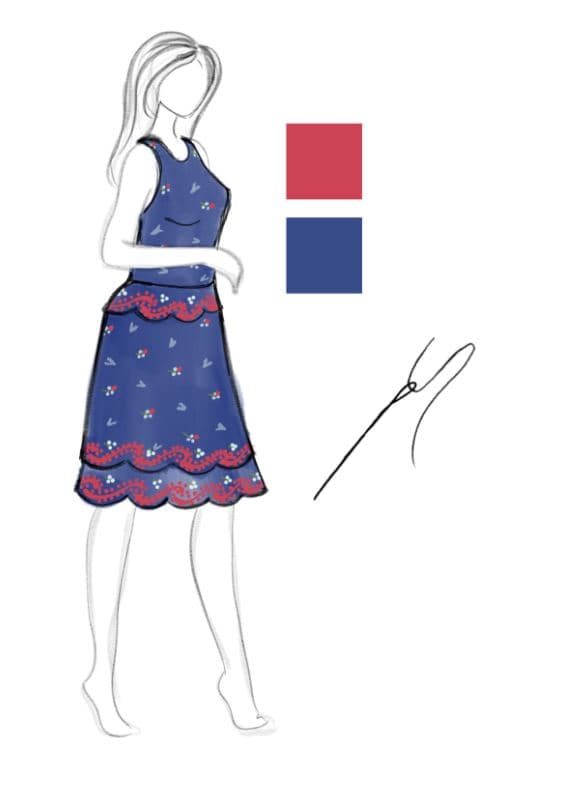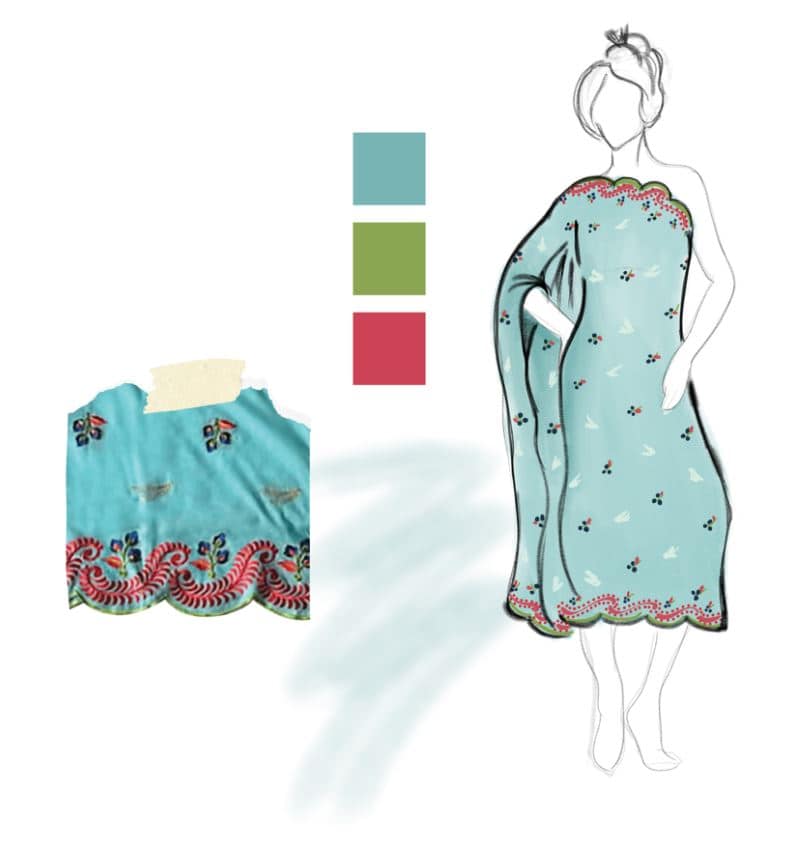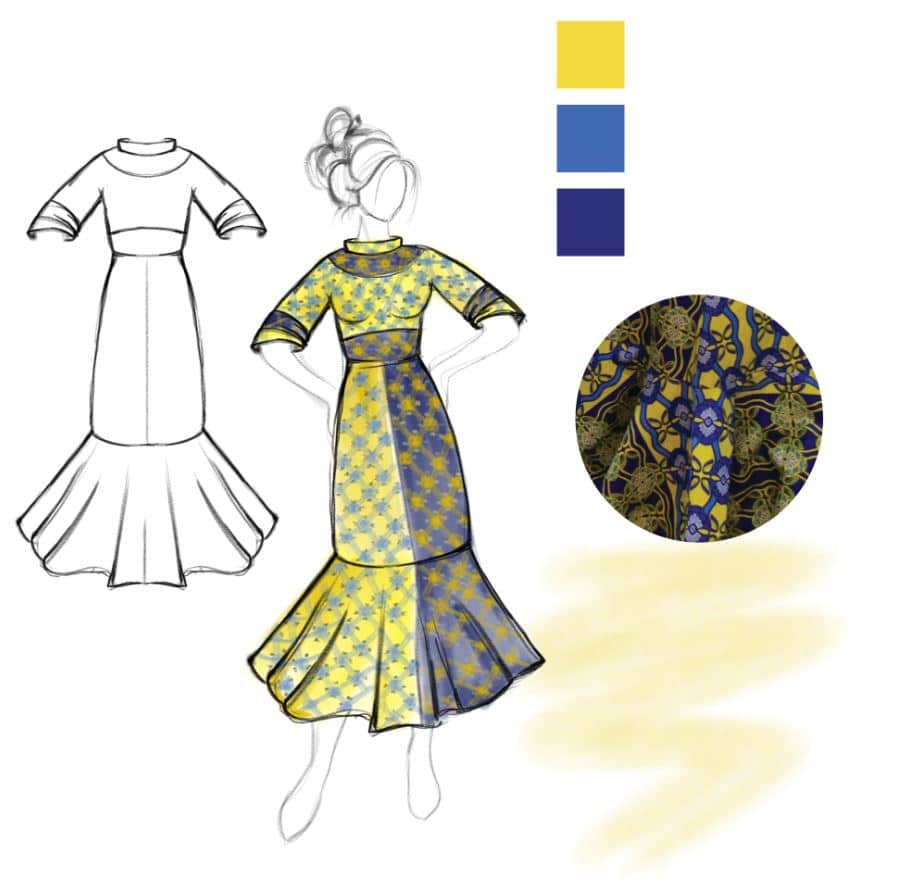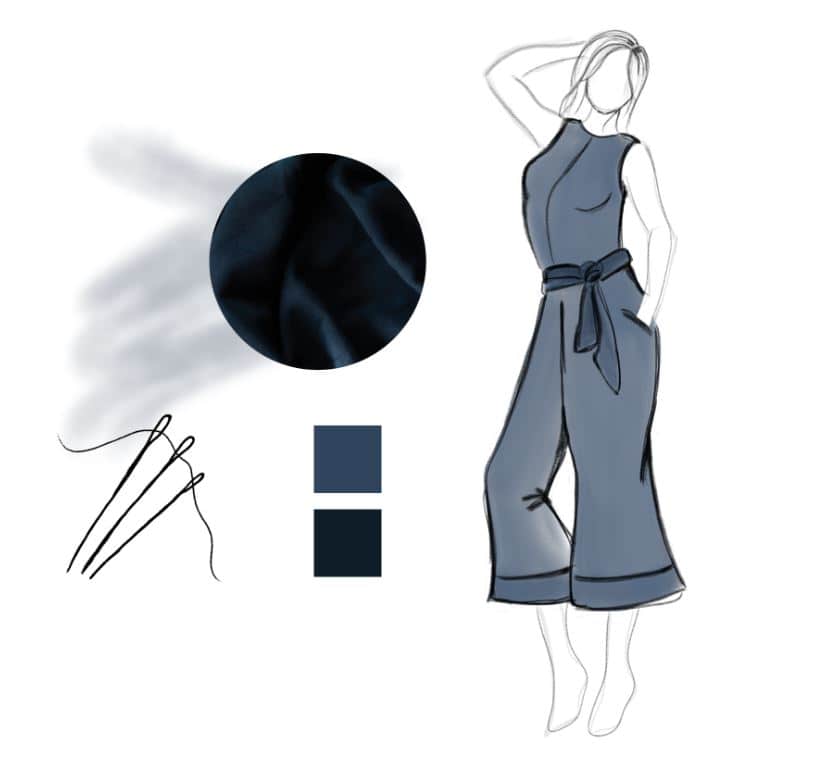Bespoke in Dakar
Discovering the Joy of Tailor-Made Clothing
It is not the emerging skyline nor the island-dotted coast stretching westward into the Atlantic that is most striking as one enters the city limits of Dakar in Senegal. It is the clothing. Men and women walk the streets impeccably dressed in colors that explode against the orange, brown, and gray background of construction, choked highways, and sandy roads, all under the glow of the dazzling African sun, in this, the continent’s most Western point.

It is the clothing. Men and women walk the streets of Dakar impeccably dressed in explosive colors
Dakar’s Dazzling Fabrics
The city is a hub for fashion and host of the annual Dakar Fashion Week. But it all starts with the fabrics. Many city residents still employ tailors versus relying solely on off-the-shelf clothes. The markets have abundant fabric stores, and everyone has a tailor to recommend.
As luck would have it, my Senegalese friend, Moussa Thiam, comes from a family of tailors. And Top, his older sister, still lives in Dakar and works in the trade. Inspired by my husband’s grandmother, who used to have garments tailor-made during her annual travels to Hong Kong, I dreamt of custom-made clothes.
So I contacted Top, excited to make a personal connection and already thinking about designs. Before my trip, I made a booklet with printouts of my desired choices. Tunics, an off-the-shoulder dress, and a jumpsuit that would fit my everyday life while still tapping into current Senegalese trends.
Like most residents of Dakar, Top speaks French and Wolof. And while I know some French, I wished for a more meaningful conversation. So once there, I met Mame Laye Mbengue, who would translate and help guide my tailoring odyssey, for which I first had to find appropriate textiles. Fabrics are sold all over the city with a concentration of shops in local markets. But out of all the options, we went to Marche HLM, the city’s biggest market.

Selecting African Fabrics in Marche HLM
Walking into Le Ndiambour Couture & Textile, a shop suggested by Mame Laye, the infinite options instantly overwhelmed me—stacks upon stacks of fabrics piled to the forty-foot ceilings. My eyes refused to settle on a single design in the blur of patterns and waterfalls of colors surrounding me. The salesman, Cheikh Bousso Mbaye, followed me as I silently circled the store. He eventually rescued me from wandering and steered me to a double row of colorful vertical bolts.
“These are made in Africa,” he said, pulling out grays, blues, and purples with subtle woven textures. With hesitant fingers, I reached towards the eggplant fabric he’d draped in front of me. But Cheikh encouraged me to touch it and feel how it pleated.
The demand for African fabrics has risen worldwide, fueling growth in the textile industry. In Northern Africa, factories are found in Morocco and Tunisia, while Ethiopia dominates the East. The trade spreads across many countries in sub-Saharan Africa, including Ghana, Kenya, South Africa, Tanzania, and Uganda. Although there are options from other continents, I was happy Cheikh led me to the African textiles, pulling bolt upon bolt off the shelves. I picked out a couple for the jumpsuit, knowing I wanted at least two versions.
Then, Cheikh took me to a section of stiff, wax-covered cotton fabrics seen all over the streets of Dakar. A yellow with blue stood out, and I added it to the pile. Circling the room, I pointed at more than I would ever need, accumulating a wide selection of eye-popping colors.
Cheikh suggested visiting the other branch of the store. Traversing the maze of streets in Marche HLM, filled with car and foot traffic, he explained we were passing from the European side of the market to the local side. But my naive eye couldn’t see the difference—stalls selling everything, from dishware to padded bras, extended into the streets. Many offered ready-to-wear items in Senegalese and Western fashion, while others only sold fabrics.
Cheikh’s second store was full of even more choices. From a row of lightweight cotton covered in an array of flowers, rhinestones, and embroidered scalloped edges, I picked two: one arctic, the other azure. With that, I had my final selections. I decided to forgo most of the stiff waxed cotton, except for the yellow and blue. I also kept two African prints for my jumpsuits and the ones I had just chosen from the second store.

All these colorful fabrics are made in Africa
Top’s Atelier
Ready to meet with Top, we headed towards her workshop in Conachap, a neighborhood not far from downtown. There was no sign above the door, just Top welcoming us with a slow wave, tape measure wrapped around her neck, and a white dress with bright orange flowers matching her headwrap.
Inside, a peach-painted hallway glowed with the light from the opened door. Across the hall, fluorescent lights illuminated a windowless room with a mirror and two sewing machines. With Mame Laye’s help, we chatted about Dakar, her brother Moussa, and her visits to see him in New York, a city Top found very loud. Then she asked to see my booklet, matching each piece to the fabric and focusing on my desired hemlines as she flipped through it. It became a quick conversation for which we barely needed Mame Laye. Top patiently reassured me and soon ushered me into the room to take my measurements.

Top matched each piece to a fabric focusing on my desired hemlines as she flipped through my booklet

Last, she shared her fee. The number Top quoted was so low I wondered if she was the only person in Senegal to offer me the local price. As explained many times during my stay, there are two prices in Dakar: the local and the visitor’s fare. And although my negotiations improved throughout the trip, she was the only person I didn’t negotiate with. I handed her half as a deposit with many “Merci beaucoup!” and pinned the location on Google Maps to come back.
Tailor-made Clothing Dreams Come to Life
I returned to Top’s atelier three days later. She greeted me at the door, dressing the same style, only this time with blue patterns instead of orange. With a warm smile and a confident head nod, she led me behind a curtain to change.
Emerging in a jumpsuit, I faced the mirror in awe. The cut was a perfect replica of my supplied design. “Tres beau,” very beautiful, I repeated in my poor French as she grabbed a scrap and added a belt. Top certainly had extraordinary craftsmanship and a honed sense of style. For the tunics, she crafted handmade buttons with the same fabric and used scalloped edges to accentuate the waist of one dress. While for the off-the-shoulder, she used it to create the dipping neckline. I felt beyond blessed to have clothes made by such an exceptional talent.


More than just a dress, it would forever tie me to Top, Dakar, and these bespoke experiences
While I was trying the clothes on, Top’s sister, Birame, joined us and told me about her grandparents, who had started their tailoring dynasty, and how they had outfitted several first ladies of Senegal. Top, Birame, and Moussa are three of their twelve grandchildren, five of whom, including Top, have continued the family tradition.
The last piece I tried on was the bold yellow and blue dress, which Top enhanced with a ruffle around the bottom hem. As I circled in front of the mirror, I could see myself at a summer wedding or garden soiree, though the place it would be most fitting was there, in Dakar. I longed to return for Fashion Week, now with the perfect outfit. More than just a dress, it would forever tie me to Top, Dakar, and all I’d come to love through these bespoke experiences.
Tailor & Designer: Top Thiam
Fabrics: Le Ndiambour Couture & Textile
Location: Dakar, Senegal
A version of this article appears in print, in Issue 2 of Álula Magazine, with the headline: “Bespoke in Dakar, The Joy of Tailor-Made Clothing.”


